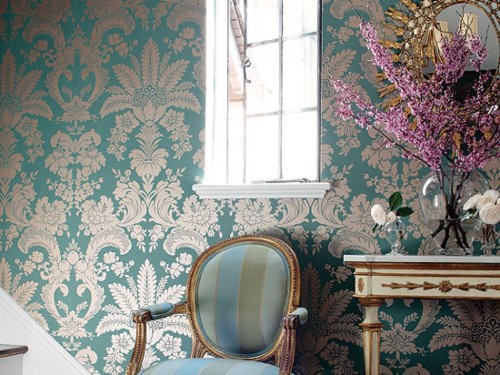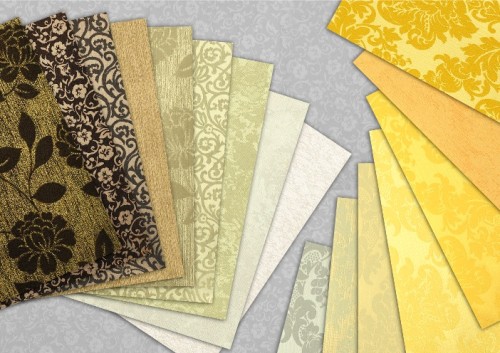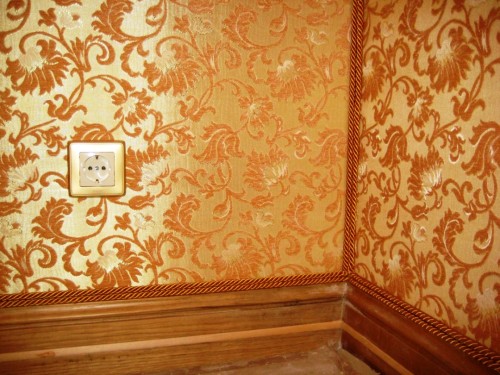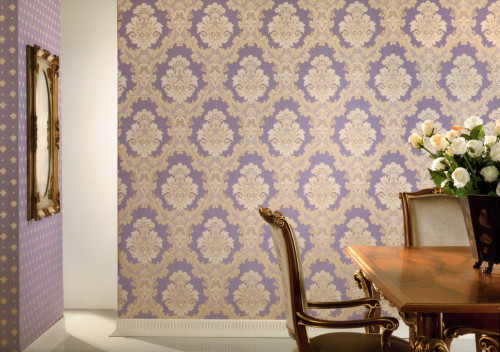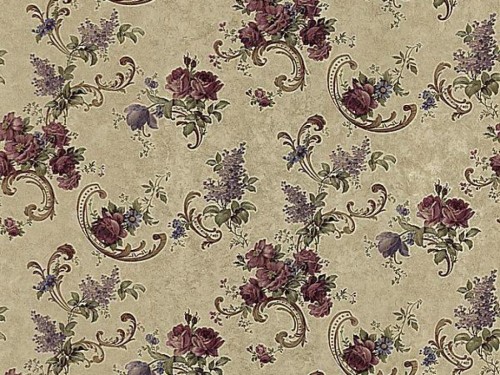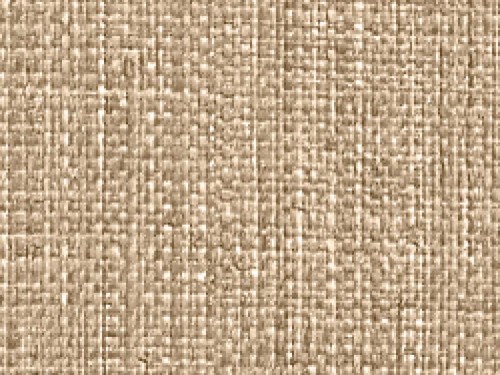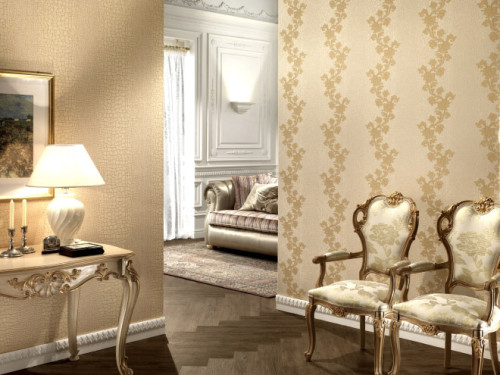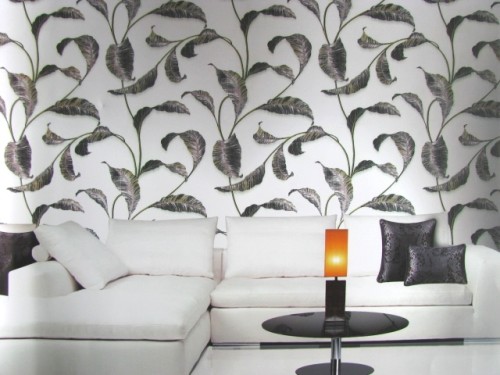Textile wallpapers today are quite popular finishing material. They are produced on the basis of fabric or non -woven. Moreover, the fabric can be both natural and synthetic. They can be used in almost any interior, but still they will look best in a room with upholstered furniture and carpets. We will talk about the nuances of choosing this material and working with it further.
Content
Textile characteristics
The technology for the production of such wallpaper is quite complicated. First of all, the preparation of the textile canvas is performed, after which the base is glued to it. Then everything is well dried in special chambers. In addition, there is a technology that implies fastening on the basis of not a whole canvas, but threads. In any case, glued wallpapers create the effect of upholstery of the walls of the room with a cloth.
Textile wallpapers have a number of advantages:
- First of all, it is worth saying that they are quite aesthetic. This quality is achieved due to the fact that joints are almost not visible between the canvases, which cannot be said about other types of wallpaper.
- Due to some qualitative characteristics of the fabric base, the coverage of wallpaper data has the functions of heat and sound insulation, which is very useful for city apartments.
- In addition, it should be noted that these wallpapers are made of natural material. Therefore, the risk of an allergic reaction and the accumulation of harmful substances in the room is minimized.
- Due to the fact that the canvases are made of fabric, they “breathe”, which is why moisture will not accumulate and mold can be avoided.
- In addition, some types of such wallpaper have additional useful properties. So, for example, linseed canvases have bactericidal effects.
- It is also worth noting that today there is a large assortment of textile wallpaper of different shades and patterns.
Textile wallpaper for walls has some "weaknesses":
- The main minus is the price. Some wallpaper models (premium) are much more expensive than other finishing materials.
- In addition, this type of coatings requires special care, since the surface of most of these wallpapers greatly attracts dust. The exception is only those types of material that were treated with antistatic impregnation.
- If we talk about ordinary wallpaper, then they do not need care, but textile canvases will need to be periodically vacuumed. You can purchase antistatic materials that do not attract particles of dust, but the price of textile wallpaper of this class is usually very high.
- In addition, it is worth noting that the more in the material of natural threads, the more uniform color it has. They do not tolerate wet cleaning. Therefore, you have to carry out only dry cleaning, and do it carefully.
- In addition, when gluing, you should be very careful so that even a drop of glue does not get to the surface of the wallpaper. If the adhesive gets on the fabric, then it will remain there forever in the form of a spot. This cannot be avoided, even if you use the glue recommended by the manufacturer. Therefore, be careful and careful.
It can be concluded that there are still more minuses in textile paintings than pluses. Therefore, many try not to use them for decoration. In some cases, they only decide to make a small decorative insert of textiles. In general, more often this type of wallpaper is preferred by respectable and wealthy people. After all, they are only interested in the chic appearance of textile products, and hired workers will be cleaned.
It is worth saying that many elegant interiors have their own luxurious appearance precisely due to the fact that the walls were pasted over with textile wallpaper. After all, no texture can be equal in beauty with textiles, which literally ennobles the room and makes it more comfortable. This method of wall decoration even today is considered one of the most expensive types of finishes that not every owner can afford. To use such wallpapers, you need to prepare for work properly, read the instructions, talk with people who were engaged in such gluing.
Types of textile paintings
Textile wallpapers have their own classification, depending on what fabric was the basis for their production. Consider only some of them:
- The budget option is considered linen wallpapers. They are made using modern surfaces lamination technology. As a result, the basis is obtained on which some threads differ slightly with a shade, "play in color." This gives the material a natural look. In addition, the wall pasted with such products resembles fabric. This type of wallpaper has a high degree of sound and thermal insulation. In addition, they are harsh racks. However, they are less than others attract dust. These wallpapers are suitable for children's, cabinets and other rooms, where the humidity level is held within the normal range.
- Quite popular jute wallpaper. The jute itself is an Indian plant used as the initial material for fabric and rope. Wallpaper from it has a pronounced texture. With them, you can hide small defects on the walls. In addition, there are varieties of such paintings that can be painted in the desired color. Jute wallpaper cannot be called demanding. They are not the most difficult to care for. Therefore, they should not cause many problems. In addition, they do not burn out and are quite wear -resistant.
- In bedrooms and offices are widely used silk wallpaper. If you look at the composition of these canvases, you can see that they actually consist of silk only for a part. What makes these wallpaper much cheaper. The rest of the material is viscose. The properties of silk wallpaper are the same as in most other textile paintings.
- The most popular type of textile wallpaper is considered felt products. They strongly resemble the external texture such as velor. These wallpapers do not burn out almost under the influence of the sun. In addition, they have good sound and thermal insulation. They are made by applying on the basis of felt. Instead, propylene or other analogues are sometimes used. The smaller in the wallpaper of synthetic components, the less environmentallybred. On the other hand, such canvases are somewhat cheaper, and caring for them is a simple task. After all, they can be washed even with a washing vacuum cleaner. Outwardly, the walls look like covered with a whole piece of fabric. But this material is not suitable for all rooms. The fact is that these wallpapers strongly absorb smells. Therefore, it is advisable to use them in rooms where there are no smells. For example, this is a living room and a bedroom.
- Velor wallpaper They are produced according to one of the most modern techniques. Their basis is paper, which is covered with a polyvinyl chloride mixture. Next, an ornament from adhesive paint is applied to the surface of the material. After that, the canvas is processed in a special machine, as a result of which fabric particles are sprayed onto the adhesive base. Due to static electricity, they cover the entire surface of the material. After that, the resulting canvas is well dried. It turns out a material that looks very similar to expensive fabrics, for example, velvet or tapestry. Despite the beautiful appearance of such wallpaper, their operational properties leave much to be desired. The fact is that this type of canvases tolerates mechanical influences very poorly. In addition, problems can cause care for them. For this reason, it is better to glue them in the bedroom, where there is no large accumulation of people. One way or another, the canvases will require special care. Otherwise, they will lose their main dignity - a great appearance.
- One of the most unusual wallpaper can be called fabric "Japanese grass". The process of their manufacture is as follows: the fiberglass threads are glued on the base of paper. In some cases, instead of fiberglass, other materials are used. In any case, the production is quite expensive. Moreover, the demand for these wallpaper is relatively small. If we talk about their gluing, it should be immediately noted that it is quite difficult. Therefore, it is recommended to entrust this business to professionals. It is difficult to work with such thin canvases. Due to their thickness, through the material, all defects in the working surface are evident without problems. Therefore, the wall before gluing should be thoroughly processed so that it becomes perfectly even.
Textile wallpaper: photo
As for the foundation of textile wallpaper, they most often use:
- non -woven materials,
- synthetics,
- paper.
Textile non -woven wallpaper easily glued onto the working surface, but if you compare them with other canvases of the same class, it should be said that they need glue impregnation. It is very difficult to stick the material without it.
The basis of synthetic textile wallpaper is thin foam. Therefore, the thickness of the material can be about 4 mm. As a result, the surface of the walls, glued with such wallpaper, becomes soft to the touch. In addition, this serves additional heat and sound insulation. The thickness of the materials greatly complicates the docking, so the canvases have to be connected by hand. Therefore, if there is no experience, then it makes no sense to think about gluing these wallpapers.
As for the wallpaper on a paper basis, this is one of the most environmentally friendly materials. Especially if only natural fibers are used in canvases. It is worth noting that, unlike wallpaper on a phlezeline basis, they are a little more complicated.
Apart from various color and textured solutions, we examined the whole variety of modern textile products, which today can be found on sale.
Textile wallpaper: how to glue
To reduce the number of scraps, you should calculate how the wallpaper will be suitable for windows and doors. It is worth reading the text that is available on the roll. Be sure to roll each canvas for compliance with the article and color. When cutting the material, it is worth leaving 100 mm so that it is possible to accurately cut the canvas under the ceiling.
Before you start gluing, you should know what basis this is done on. If it is non -woven, then the glue is allowed to be applied to the wall, and the wallpaper itself is not pre -processed. If the basis is paper, then the glue should be gently applied to the canvas, and then wait a little while the paper brings moisture and then glue it. You can do this differently. For example, apply glue to the wall, but prepare the canvas in advance by processing with a sponge slightly moistened in water. In this case, there should be so much moisture so that it does not pass through the canvas and the seams do not get wet.
Important points:
- The fabric is rather hygroscopic material. Therefore, even a small drop can turn on the canvas into a large spot. This stain after it dries, it can leave the stains unpleasant to the look. Defects can appear even if dripped with a drop of clean water. The fact is that the threads are painted with water -based paints.
- One way or another, when gluing these wallpapers, it is necessary to carefully monitor the amount of glue applied. It should be so much to be enough for uniform gluing. The glue should not soak the canvas through or go through the seams. In case of adhesive composition on the front side of the canvas, it will have to be replaced with a new one. Therefore, be extremely careful.
- After gluing two paintings, they should be examined externally: there should not be noticeable defects on them. In order to evaluate the quality of work as a whole, you need to let the material dry. In addition, some defects (for example, spots, stains and divergence of seams) can only be seen after the glue dries. If there are no defects, then you can continue pasting the wallpaper of the rest of the room.
- When gluing textile wallpaper, a plastic spatula cannot be used categorically. The fact is that it squeezes glue through the seam, which is why spots are formed on the canvases. It is recommended to smooth the textile wallpaper with a roller, and this should be done from top to bottom.
Pushing textile paintings with a reverse
Such wallpapers are marked with a special icon with parallel arrows directed in different directions. If you see this symbol, it means that these textiles need to be glued to each other. Pre -prepare the wallpaper for gluing. To do this, they are cut into parts of the desired length. On each of them, a mark should be made in order to then navigate on it how to stick the canvas correctly.
The first canvas should be glued so that this arrow drawn on the icon is directed up, the second accordingly is glued with an arrow down. The next canvas is again upward, etc. As a result, it turns out that the right and left edge will be combined correctly.
In reverse wallpaper, the color that has the right edge, in some cases, is a little lighter or, conversely, darker than the left. This difference is almost invisible until the wallpaper is glued. This nuance will be visually visible if the reverse textiles are glued as ordinary, i.e. All canvases in one direction. The sharp transition of the light edge to the dark will be visible. Usually these wallpapers do not have a drawing, so they are not required to be strictly combined. The technique of gluing some other canvases with reverse may well be not as described above. Therefore, carefully read the instructions attached to the roll of wallpaper.
Poking of textile wallpaper with a rear pattern
Some manufacturers of textile wallpaper produce products on the edges of the paintings of which there are repeated drawings. Thanks to this, the seam after gluing will turn out to be neat. The posterior pattern avoids damage to the edges during the transportation of rolls.
If you glue such wallpapers in the usual way, i.e. In the way, it will be seen that the seam has the back of the picture. In this case, the canvas should be overlapping, combining the pattern applied. Then take a ruler, and with the help of a sharp knife to cut off the extra edges. In order to avoid the appearance of spots, it is impossible to allow the adhesive solution to fall on the front surface of the wallpaper.
Nuances of textile care
After the repair, excess material usually remain. These scraps are recommended to be preserved. They can experience cleaning products before using them on already glued canvases. Textiles - the material is quite demanding and fragile. Typically, means of “dry” cleaning are used to care for such wallpaper. If you do not first experience the tool on trimming, then you can ruin the work done earlier.
It is also worth saying that textile wallpaper differs slightly from others in the drying method. The textile dries longer. Therefore, it cannot be allowed to get into the room with a draft for at least two days after gluing. The recommended period is three days. The drying process should take place while an acceptable temperature is kept in the room. During this time, canvases will be able to get used to the conditions in which they will constantly be.
How to glue textile wallpaper: video
m

